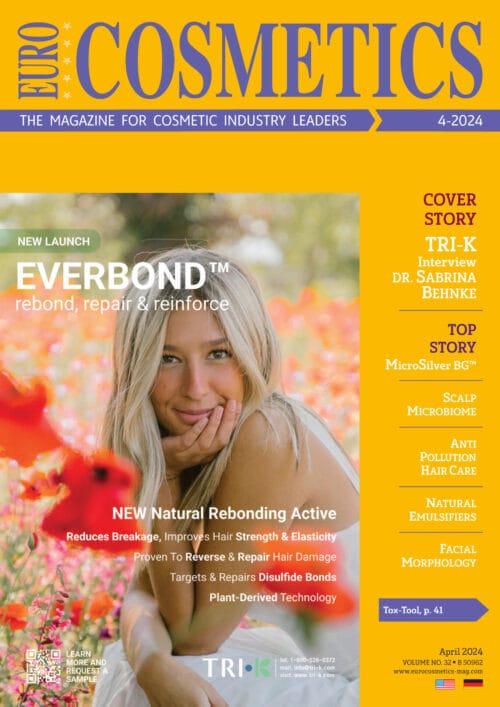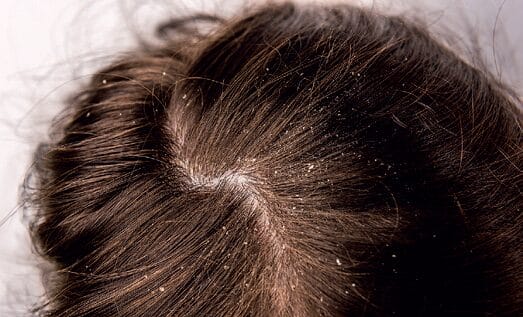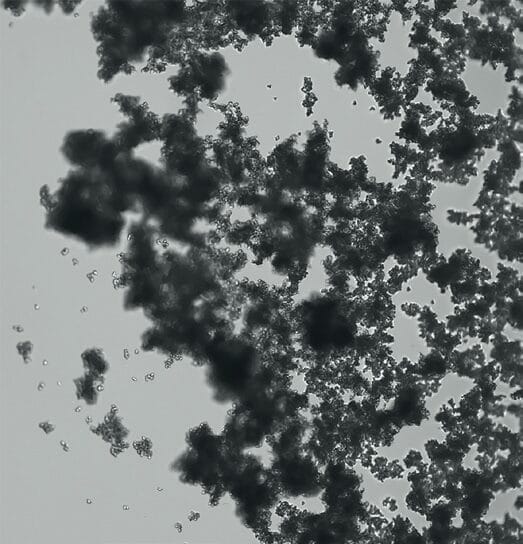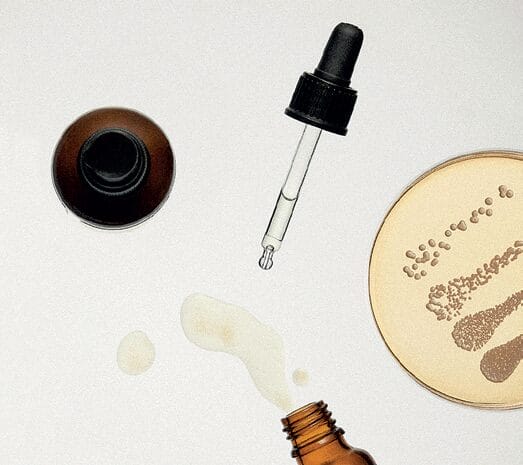
Dandruff and seborrheic dermatitis are prevalent scalp disorders that affect millions of people worldwide, both characterized by flaking, itching, and inflammation. These conditions not only pose cosmetic concerns but also impact the quality of life for affected individuals. Seborrheic dermatitis is a chronic and relapsing inflammatory disorder, represents an exacerbation of dandruff pathology, often affecting sebum-rich areas such as the scalp, face, and intertriginous regions. While the precise etiologic of seborrheic dermatitis remains elusive, dysregulation of the immune response, genetic predisposition, and neurogenic factors have been implicated. Malassezia were thought to be the cause, and dandruff scalp treatments and shampoos are therefore geared towards fighting fungi. But with more knowledge about the scalp microbiome, it appears more likely that a microbial dysbiosis, involving both fungi and bacteria, is the major cause of dandruff. A dysbiosis can lead to flaking, itching and irritation of the scalp, as well as inhibited hair regrowth and even hair loss.
Over recent years, a burgeoning body of research has underscored the pivotal role of the scalp microbiome in the etiopathogenesis of these dermatological disorders, shedding light on novel therapeutic avenues and preventive strategies. Over the years, numerous studies have delved into the underlying causes of dandruff, and one intriguing area of research is the scalp microbiome.
What’s going on ON your head?
Beneath the surface of our scalp lies a vibrant and diverse ecosystem known as the scalp microbiome. This complex network of microorganisms, including bacteria, fungi, viruses, and archaea, functions much like a finely tuned orchestra, playing a crucial role in maintaining the health and vitality of the scalp. This ecosystem is essential for various scalp functions, influencing hair growth, immune response, and overall scalp health.

The concept of the microbiome refers to the collective array of microorganisms that inhabit different parts of the human body, with the scalp microbiome being a significant part of this intricate microbial world. These microorganisms live in a delicate balance, and their interaction with our bodies can reveal extensive insights into our health and well-being.
Disruptions in this microbial balance can lead to common scalp issues such as dandruff and seborrheic dermatitis, underlining the importance of understanding the microbial interactions at play. The study of the scalp microbiome offers the potential to unlock new approaches to scalp and hair care, emphasizing the interconnectedness between our bodies and the microbial world.
Recent research has suggested that alterations in the scalp microbiome may contribute to the development of dandruff. In a healthy scalp, the microbiome is typically well-balanced, with beneficial microorganisms keeping harmful ones in check. However, disruptions to this balance, such as changes in microbial diversity or an overgrowth of certain species, could potentially trigger dandruff symptoms.
One common culprit associated with dandruff is the yeast-like fungus Malassezia. Notably, Malassezia-driven immune dysregulation, characterized by T cell-mediated responses and cytokine cascades, underscores the immunopathogenesis of seborrheic dermatitis, thus substantiating the symbiotic relationship between microbial dysbiosis and cutaneous inflammation. While Malassezia is a normal part of the healthy scalp microbiome, an overgrowth of this fungus, especially some species of Malassezia, has been linked to dandruff. Enhanced sebum secretion serves as a nutritive substrate for Malassezia, facilitating its proliferation and metabolic activity. Notably, Malassezia exhibits lipase activity, contributing to the hydrolysis of sebum triglycerides into free fatty acids, which, in turn, evoke inflammatory responses and disrupt the epidermal barrier integrity, manifesting clinically as dandruff and seborrheic dermatitis.
Our scalp, that houses about 100,000 hair follicles, delivers sebum to a surface area of about 650 cm2. The serum lubricates the scalp and hair as well as it feeds the microbiota. Most research around the scalp microbiome is focused on the role that microbes play in conditions of dysbiosis like dandruff or Alopecia (hair loss), and less focus has been on maintaining a healthy scalp microbiota. The microorganisms on your scalp produce enzymes, bacteriocins, essential amino and vitamins like biotin, which is among other functions, crucial for production of keratin, a structural protein of both hair and skin.
Dandruff – Who’s to blame?
Research suggests that interactions between Malassezia and other microorganisms on the scalp may play a role in dandruff development. For example, certain bacteria found on the scalp have been shown to produce compounds that either inhibit or promote the growth of Malassezia. Imbalances in these microbial interactions could potentially exacerbate dandruff symptoms. Recent studies have unravelled intricate microbial crosstalk within the scalp microbiome, implicating dysbiotic states characterized by alterations in microbial diversity and abundance. The dysregulation of microbial interactions, particularly between Malassezia and bacterial constituents, can cause a pro-inflammatory environment conducive to the perpetuation of dermatological pathology. Notably, Staphylococcus, Cutibacterium and Propionibacterium species have been shown to modulate Malassezia proliferation through competitive inhibition and metabolic cross-talk, thus delineating the intricate microbial landscape underlying scalp health and disease.

Despite its notoriety as a culprit in dandruff and seborrheic dermatitis, Malassezia is only one player in a complex ecosystem where balance is key.
While in the past, fungi like Malassezia were thought to be the culprit – and dandruff treatments therefore were geared towards fighting fungi – current studies show, that a microbial dysbiosis, involving both fungi, bacteria and perhaps mites, is at its root. The major bacterial and fungal species present in the scalps of dandruff subjects is significantly associated with a higher amount of both Malassezia restricta and Staphylococcus epidermidis and a lower amount of Cutibacterium acnes in dandruff population compared to control population. Another study has shown that Staphylococcus epidermidis declines and Staphylococcus capitis significantly increases on a dandruff scalp, and other reports a link to the mite Demodex typically being associated with rosacea. Indicating that the dysbiosis of dandruff is complex and still not fully understood and likely is influenced by multiple individual parameters, changes in scalp biology, damage to the skin surface, or changes in skin oil production.
The scalp microbiome does influence local immune responses and inflammation through interactions with immune cells and the production of microbial metabolites, which will depend on the composition of different species in the microbiota. Dysbiosis of the scalp microbiome may even exacerbate inflammation and immune-mediated hair follicle damage.
Microorganisms within the scalp microbiome produce various metabolites, some of which may have implications for hair growth and follicle health. For example, certain microbial metabolites can influence the differentiation and proliferation of hair follicle cells, potentially affecting hair growth cycles. The scalp microbiome may even interact with hormones, including androgens, through enzymatic activities or other mechanisms, potentially modulating hormone-mediated effects on hair follicles.
Further research is needed to elucidate the precise mechanisms and establish causality. Longitudinal studies examining changes in the scalp microbiome over time in individuals with dandruff and seborrheic dermatitis, as well as interventional studies targeting the microbiome, are necessary to advance our understanding.
Moreover, personalized approaches that consider individual variations in the scalp microbiome, genetics, immune function, understanding microbial interactions and other factors may be crucial for developing effective strategies for managing dysbiosis. By harnessing the potential of the scalp microbiome as a therapeutic target, researchers may uncover innovative treatments for dandruff.

Choosing products for a thriving scalp
Our scalp and hair are greatly impacted by the personal care products being used. To keep the scalp healthy, it’s best to avoid over-washing the hair and use products that don’t disturb microbial growth and diversity.
Understanding the scalp microbiome and its relationship with dandruff opens up new possibilities for targeted treatments and interventions. Rather than simply addressing the symptoms of dandruff, such as flaking and itching, it is important to explore ways to restore balance to the scalp microbiome to alleviate dandruff at its source.
Therapeutically, the modulation of the scalp microbiome represents a promising frontier in the management of dandruff and seborrheic dermatitis. Both as treatment of dysbiosis or for maintaining a balance of the scalp microbiome. Different microbial solutions hold therapeutic potential in restoring eubiosis within the scalp microbiome, bolstering the resilience against Malassezia proliferation and mitigating inflammatory cascades.
One promising approach involves the use of probiotics, postbiotics and perhaps also prebiotics to promote a healthy scalp microbiome. Probiotics are beneficial live microorganisms that can help restore microbial balance, prebiotics are compounds that serve as food for these microorganisms, while postbiotics are the metabolites and products being produced by probiotic cells. Sometimes postbiotic refers to a single metabolite e.g. lactic acid and sometimes to a very complex mixture of thousands of metabolites including cell fractions or intact dead cells.
Probiotic microorganisms will, during fermentation, work like a tiny cell-factory, making some of the skincare industry’s most hyped active ingredients in form of a potent cocktail of functional metabolites, peptides, polymers, vitamins, antioxidants, and organic acids – some of these – with multiple functionalities and collectively influencing various facets of health.
Targeted microbial solutions to dysbiosis – Precision probiotics
To harness the beneficial health effects from probiotics, it is important to understand the modulation of the microbiota and the effects of microbial metabolites. Many diseases and skin issues have now been linked to disturbance in the microbiome including dandruff, alopecia, atopic dermatitis, acne, vaginosis, metabolic syndrome, cancer, brain health and neurological disorders and probably with more to come. Identifying new probiotic strains with targeted functionalities can improve the likelihood of obtaining a specific health benefit of precision probiotic strains. Precision probiotics offer a more targeted and effective solution than conventional probiotics.

Probiotic microorganisms will during cell metabolism and growth produce multiple functional metabolites, peptides, polymers, organic acids etc. When probiotic lactic acid bacteria are fermented, some of the known probiotic characteristics can be maintained and rediscovered in the fermentation broth and by the dead cell material or the dead probiotic cells (paraprobiotics). Selection of a precision probiotic strain, controlling the fermentation conditions, the substrate for fermentation and the downstream processing of these ferments – results in precision postbiotic products – with the wanted probiotic characteristics being maintained.
Exactly which metabolites a probiotic microorganism can produce depends on the genome, metabolic pathways and is impacted by the nutrients available as well as the environment. Lactobio has established a technology platform for targeted screening and identification of new precision probiotics. This platform technology allows for identification of the probiotic strain best suited for a targeted functionality – e.g. control of dandruff.
Pediococcus pentosaceus LB606R®, isolated and identified as a precision probiotic for mycobiome dysbiosis through targeted screening by Lactobio, is specifically effective against dysbiosis caused by Malassezia.
The effect is also obtainable by metabolites produced by LB606R® in a postbiotic (ferment-lysate) version of the strain. This probiotic strain was identified based on functional screening parameters corresponding to the known species involved in dysbiosis associated with dandruff. Thus, Pediococcus pentosaceus LB606R® is able to inhibit growth of Malassezia restricta and Staphylococcus epidermidis without disturbing Cutibacterium acnes.

By introducing probiotics and postbiotics to the scalp, it may be possible to enhance the growth of beneficial microorganisms and inhibit the growth of dandruff-causing species like Malassezia restricta without disruption of the delicate microbial balance of a healthy scalp. One of the advantages of postbiotics is their inherent stability and extended shelf life compared to live probiotics. As non-living components, postbiotics can remain efficacious in typical consumer formulations and conditions, ensuring their potency in skincare formulations.
Probiotic can offer beneficial effects, such as protection against dysbiosis and infectious diseases; prevention of metabolic disorders; alleviation of gastrointestinal symptoms; strengthening of the immune system; improved mental health; and general well-being. As more and more knowledge become available about how our microbiome influences human health and prevent diseases, it also becomes possible to development targeted precision probiotics, or even microbial therapeutics, with improved probiotic functionalities for targeted applications, effects, and health benefits.
In addition to microbial factors, several other aspects are vital for maintaining scalp health. Proper hygiene practices, including regular cleansing with mild shampoos and avoidance of harsh chemical treatments, help preserve the scalp’s natural balance and minimize the risk of microbial dysbiosis. Furthermore, dietary habits rich in essential nutrients, such as omega-3 fatty acids, vitamins, and antioxidants, can bolster the skin’s barrier function and mitigate inflammatory responses, thereby promoting scalp health.
Therefore, a microbial solution involves the use of probiotics and postbiotics to restore microbial balance on the scalp. Probiotics, beneficial microorganisms, can help suppress the growth of dandruff-associated pathogens while promoting the proliferation of beneficial species. Prebiotics, on the other hand, serve as nutrients for these probiotics, fostering their growth and activity. Together, probiotics and prebiotics work synergistically to rebalance the scalp microbiome and alleviate dandruff symptoms. Thus, prebiotics can also be part of the solution, however, it is important to understand which prebiotic to include, as the prebiotic is to promote growth of the wanted microorganisms and not be nutrients for the unwanted microorganisms of the microbiota in a dysbiosis.
As our understanding of the scalp microbiome continues to evolve, so too do our approaches to dandruff control. By harnessing the power of probiotics, postbiotics, prebiotics, microbiome-friendly hair care products, and personalized interventions, we can usher in a new era of dandruff management focused on restoring microbial balance and promoting scalp health. With these innovative solutions at our disposal, individuals suffering from dandruff can find relief and regain confidence in their scalp’s health and appearance.
In conclusion, the scalp microbiome plays a significant role in the development of dandruff, and understanding this relationship could lead to more effective treatments and preventative measures. By targeting imbalances in the scalp microbiome and promoting microbial diversity and balance, researchers aim to provide relief for those suffering from dandruff and improve the overall health of the scalp. As our knowledge of the scalp microbiome continues to expand, so too will our ability to combat dandruff and related scalp conditions. Our scalps are showing yet again the importance of a balanced microbiome. So, hats off to our tiny friends, that take care of our microbial health from head to toe.
References
- Wang, L., Clavaud, C., Bar.Han, A., Cui, M., Gao, J., Liu, Y., Liu, Y., Shibagaki, N., Guéniche, A., Jourdain, R., Lan, K., Zhang, C., Altmeyer, R. & Breton, L. (2015) Experimental Dermatology, 24, 381–400.
- Clavaud C, Michelin C, Pourhamidi S, Ziane S, el Rawadi C, Muller B, Souverain L, Panhard S, Jourdain R, Massiot P, Martin R, Isard O, Cabirol F, Drillon D, Breton L, Pouradier F, Aguilar L, Loussouarn G, Gueniche A. Selenium disulfide: a key ingredient to rebalance the scalp microbiome and sebum quality in the management of dandruff. Eur J Dermatol 2023; 33(S1): 5–12 doi:10.1684/ejd.2023.4400
- Grimshaw, S. G., Smith, A.M., Arnold, D.S. Xu, E., Hoptroff, M. & Murphy, B. (2019) PLoS One, 14(12): e0225796.
- Barquero-Orias, D., Moreno-Arrones, O., & Vano-Galvan, S. (2021). ACTAS Dermo-Sifiliograficas.
- Christensen, I.B., Vedel, C., Clausen, M-L., Kjærulff, S., Agner, A., & Nielsen D.S. (2021). Frontiers in Microbiology, 12, Article 733847.
- Vedel. C., Tesdorpf, J. E., Kjærulff, S. & Elvebakken, H. F. (2023) WO2023/025911A1



